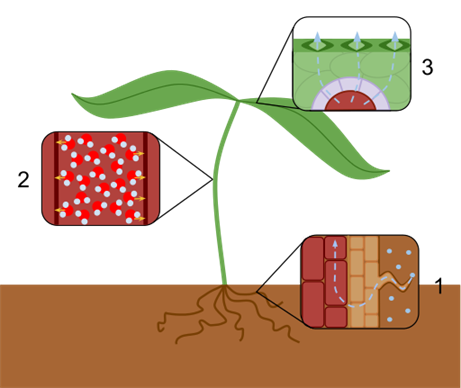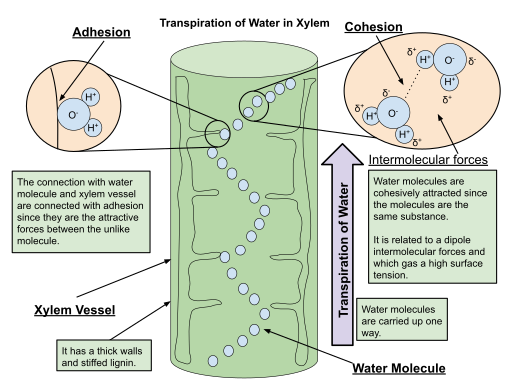PDF chapter test TRY NOW
Root pressure:
When the mineral ions from the soil are actively transported into the xylem tissue of the root, water also moves along, thereby increasing the pressure inside the xylem. This pressure is known as root pressure and is responsible for moving the water in upward directions.
Demonstration of root pressure:
Take a small soft and stemmed plant and cut its stem horizontally near the base with a blade in the morning. We can find drops of solution oozing out of the cut stem. This is due to root pressure.
A video explaining what is root pressure and its significance
Ascent of sap and its events - An overview:
What is an ascent of sap?
The upward movement of water and minerals from roots to the different parts of the plant is known as ascent of sap.
Various factors control the mechanism of mechanism of ascent of sap, and it takes place in the following steps.

1. Entry of water molecules by osmosis (passive process): Water molecules enter passively, passing through the cortex into the xylem tissue via the Casparian strips. Water is passively transported into the vessel elements or tracheids due to a concentration gradient of solutes within the xylem.
2. Adhesion and cohesion effect.
3. Transpirational pull: Water from the xylem passes through the spongy mesophyll and into touch with the stomata. Evaporation happens when the stomata open, exposing the cells in this layer to the outside air. When water molecules evaporate from the stomata, they cause tension in the water column because cohesive forces pull neighbouring molecules up with them, providing a pulling force down the xylem's length.
1. Root pressure:
The water present in the soil enters the root hairs through osmosis. This root pressure that develops is responsible for the movement of water from the roots to the base of the stem.
2. Capillary action:
The phenomenon in which water or any liquid rises in a capillary tube due to physical forces capillary action.
The water in the stem similarly rises to a certain height due to capillary action.
3. Adhesion-cohesion of water molecules:
A continuous water column is formed in the xylem because of the molecular forces of adhesion and cohesion.
4. Cohesion:
It is the force of attraction between the molecules of water.

The movement of water from roots by adhesion and cohesion
5. Adhesion:
It is the force of attraction between the molecules of different substances. The water molecules stick to the xylem because of the force of the adhesion.
A video explaining the mechanism of the ascent of sap
Reference:
https://commons.wikimedia.org/wiki/File:Transpiration_of_Water_in_Xylem.svg
